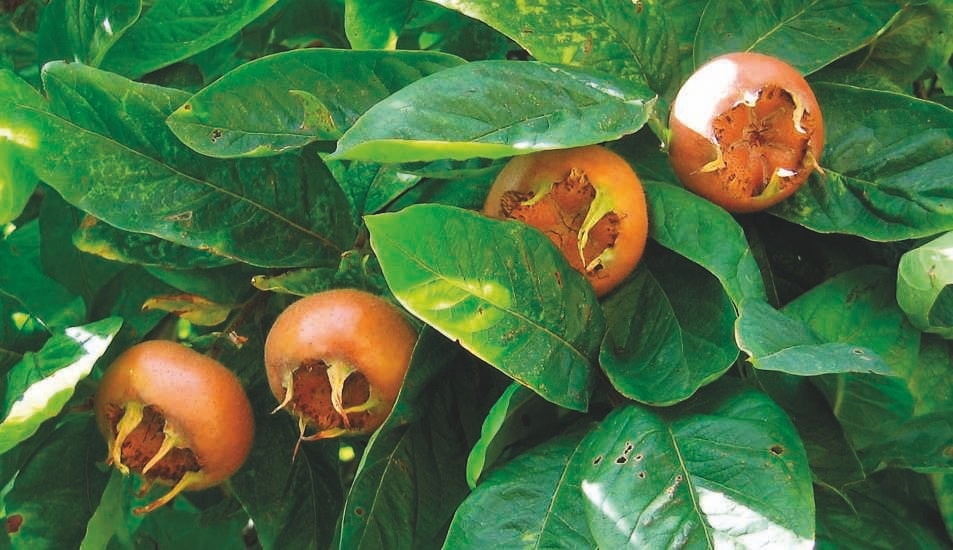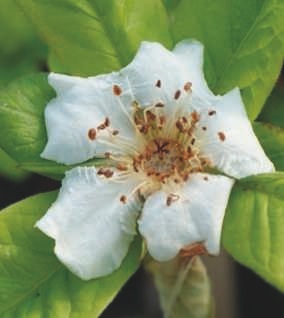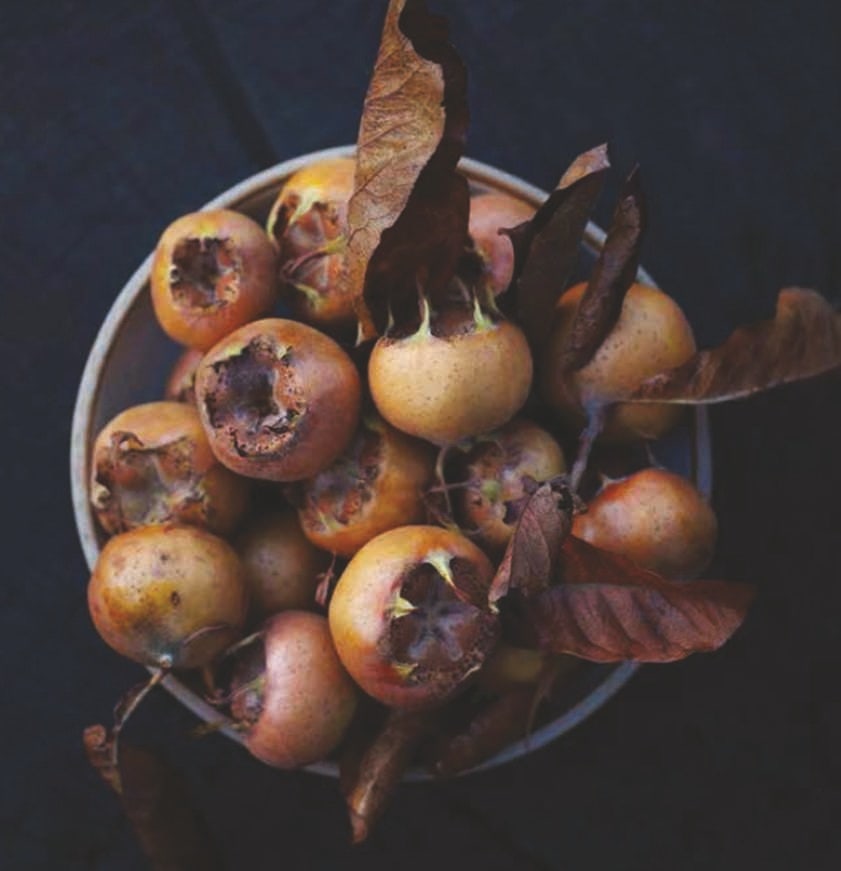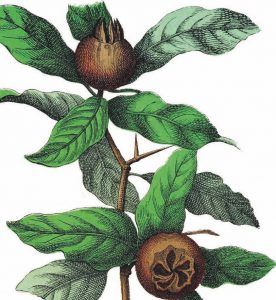The Best Fruit You’ve Never Heard of
The medlar makes a handsome tree and bears odd but highly prized fruits that are only edible once ‘bletted’ or almost rotten.
Victim of many disparaging descriptions, medlars have been referred to as being one of the most disgusting-looking fruits, but to advocates of this once popular fruit, it’s probably one of the most misunderstood of all.
Regarded as a curiosity and eaten only when the fruit is rotten it’s an acquired taste pronounced by connoisseurs as being delicious – something like very rich apple sauce with hints of wine. The simplest way to eat it is raw with accompaniments of wine or cheese or as a sauce with game.
Medlars are hardy and self-fertile, so only one tree is needed for a crop. Fruits are borne on spurs from older wood.
Often given the accolade of having year-long beauty in spring, in contrast to other fruit trees the
If starting with a maiden, support the stem with a long stake for the first three or four years. Once a strong, well-spaced branch framework has been established, minimal pruning is required.
Medlars grow best in a deep, fertile, well-drained soil and tolerate most soils, unless they are very chalky or poorly drained. They prefer a warm, sheltered, sunny site but can be grown in partial shade. Leaves and flowers are easily damaged by strong winds.
Harvesting is usually in November, but at the time of picking, the fruit is inedible due to its astringency. The fruits need to be picked and stored, stalk upward, in a cool, dark place until the flesh turns soft and yellowish brown. The correct term for this is ‘bletted, not rotten fruit.



Photo from The Orchard Cook, Recipes from Tree to Table by Stuart Ovenden.
Published by Clearview Books.
Nottingham Medlar trees can be purchased from GROW AT BROGDALE, Brogdale Farm, Brogdale Road, Faversham ME13 8XZ. (www.brogdaleonline.co.uk).
Posted in: Gardens

